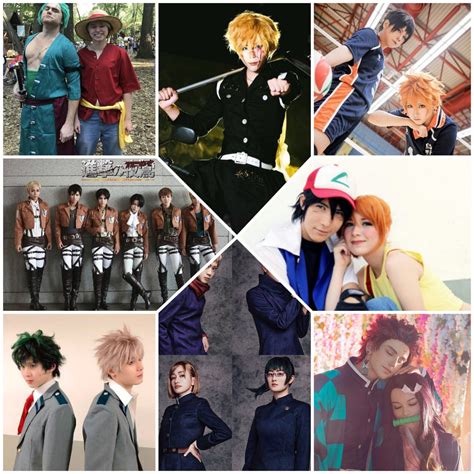Introduction
Cosplay, the art of dressing up as fictional characters, has become a global phenomenon. From professional cosplayers to hobbyists, people of all ages and backgrounds engage in this creative pursuit. However, achieving high-quality cosplay requires careful planning, meticulous craftsmanship, and an unwavering dedication to detail. This guide will provide you with all the essential information you need to elevate your cosplay game to the next level.

Materials and Techniques
1. Fabric Selection
Choosing the right fabric is crucial for creating authentic and visually striking costumes. Research the materials used in the character’s original costume and consider factors such as texture, weight, and drape. Common fabrics for cosplay include cotton, satin, wool, and spandex.
2. Costume Construction
Craft your costume with precision. Use proper sewing techniques, including seam allowances, interfacing, and closures. Pay attention to the fit and ensure that the costume is both comfortable and flattering. Utilize techniques such as embroidery, applique, and beading to add intricate details.
Character Portrayal and Prop Creation
3. Character Study
Immerse yourself in the character’s background, personality, and physical appearance. Study the source material and observe how the character moves, speaks, and interacts with others. This understanding will inform your performance and make your cosplay more convincing.
4. Prop Crafting
Props play a vital role in bringing your character to life. Design and create props that are accurate to the original source and complement your overall look. Utilize materials such as foam, wood, and metal to construct props, and incorporate special effects to enhance their realism.
Photography and Editing
5. Photography
Showcase your cosplay through high-quality photography. Find a suitable location, experiment with lighting, and capture dynamic poses. Consider hiring a professional photographer who specializes in cosplay photography for stunning results.
6. Post-Processing
Edit your cosplay photos to enhance their visual appeal. Adjust lighting, color balance, and contrast. Remove blemishes and imperfections using retouching tools. Explore advanced techniques such as compositing and photo manipulation to create artistic and visually engaging images.
Industry Insights
According to a study conducted by the International Cosplay Association, the global cosplay market was valued at over $2 billion in 2022. This figure is expected to grow significantly in the coming years, driven by the increasing popularity of anime, manga, and video games.
Professional cosplayers, such as Yaya Han and Leon Chiro, have achieved global recognition and established successful careers within the industry. They often collaborate with designers, photographers, and brands to create high-end cosplay costumes and merchandise.
Common Mistakes to Avoid
1. Poor Craftsmanship
Avoid cutting corners or rushing the costume construction process. Details matter, so take your time and strive for excellence in all aspects of your cosplay.
2. Lack of Character Development
Don’t simply dress up as the character; embody them. Study their mannerisms, voice, and gestures. A well-developed character portrayal will elevate your cosplay experience.
3. Inaccurate Prop Creation
Ensure that your props are faithful to the character’s design. Avoid using props that are too small, too large, or out of proportion.
4. Poor Photography
Don’t neglect the importance of photography in capturing your cosplay. Choose a location that complements your character and invest in a good camera and lighting equipment.
A Step-by-Step Approach
1. Planning
- Research the character and gather inspiration
- Choose the right materials and techniques
- Plan your costume construction schedule
2. Construction
- Sew, glue, and assemble the costume
- Add details and embellishments
- Fit and adjust the costume as needed
3. Characterization
- Study the character’s personality and mannerisms
- Develop a believable performance
- Practice posing and interacting with others
4. Prop Creation
- Design and gather materials for your props
- Construct the props with precision and accuracy
- Integrate special effects and finishes
5. Photography
- Find a suitable location with good lighting
- Experiment with different poses and angles
- Hire a professional photographer if possible
6. Post-Processing
- Edit your photos to enhance their visual appeal
- Adjust lighting, color balance, and contrast
- Remove imperfections and blemishes
Conclusion
Creating high-quality cosplay is an art form that requires dedication, precision, and a deep understanding of your character. By following the guidelines outlined in this guide, you can elevate your cosplay skills and create unforgettable costumes that will turn heads. Embrace the creativity, challenge yourself, and immerse yourself in the vibrant world of cosplay. Remember, the pursuit of high quality is an ongoing journey, so never stop learning and refining your craft.
